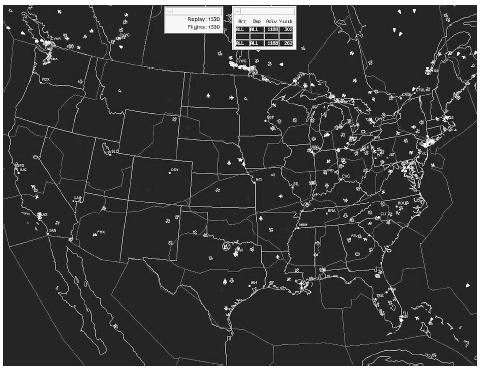FAA (United States Federal Aviation Administration)
█ STEPHANIE WATSON
The Federal Aviation Administration (FAA) is the government agency charged with ensuring the safety of air travel in America, developing new aviation technologies, and overseeing air traffic control for both passenger and military aircraft.
The FAA takes flight. As air travel began to take off at the beginning of the 20th century, the government realized that a special agency was needed to regulate the fledgling airline industry. In 1926, Congress passed the Air Commerce Act, putting the U.S. Department of Commerce in charge of air travel and commerce. Under its wing emerged the earliest predecessor of the FAA, called the Aeronautics Branch. A former lawyer, William P. MacCracken, Jr., was chosen to head up the new agency. On April 6, 1927, MacCracken received the very first pilot's license. Three months later, the agency issued the first aircraft mechanic's license.
In 1934, the Aeronautics Branch was renamed the Bureau of Air Commerce. Four years later, the oversight of civil aviation passed into the hands of an independent government agency, called the Civil Aeronautics Authority. President Franklin D. Roosevelt eventually split the authority into two agencies, the Civil Aeronautics Administration (CAA) and the Civil Aeronautics Board (CAB). The CAA issued pilot and aircraft certification, enforced safety regulations, and developed new air routes, while the CAB enacted safety rules, investigated crashes, and regulated the economic aspects of the airline industry.
America entered the jet age in the 1950s, with faster, more powerful airplanes that allowed the public to travel more easily and affordably. As more Americans took to the skies, the number of airplane crashes rose, and the government recognized the need for new aviation security measures. In 1958, Congress passed the Federal Aviation Act, creating the Federal Aviation Agency, which took over safety and air traffic control responsibilities from the CAA and CAB. When the organization became part of the new Department of Transportation in 1967, the word agency in the FAA's title was changed to administration.

As the aviation industry and the world itself changed in the latter part of the 20th century, the role of the FAA evolved and expanded. A wave of hijackings in the 1960s gave a greater urgency to the need for more stringent passenger security standards. Concerns over the environment led to aircraft noise standards in 1968. Increasing air traffic led to the National Airspace System (NAS), a 1982 plan that modernized ground-to-air surveillance and communications systems.
Following the terrorist attacks on September 11, 2001, the FAA enacted tougher airport security measures, including background checks for all airport employees with access to secure areas, new rules prohibiting passengers from carrying-on knives and other potential weapons, and more widespread use of explosive-detection machines for examining checked baggage. The agency also replaced privately owned airport security companies with federally employed screeners.
In April, 2003, the FAA announced that hardened cockpit doors had been retrofitted in over 10,000 foreign and domestic aircraft. The new doors are meant to deter and stop small arms fire or forced entry, and can only be opened by the pilots from inside the cockpit.
The FAA today. The FAA is headquartered in Washington, D.C., with nine branches scattered across the country. Heading the agency is the administrator, who is assisted by a deputy administrator and six associate administrators. First and foremost, their job is to keep the skies over America safe. To that end, no aircraft can fly without first meeting the FAA's stringent safety standards, and no pilot can earn his or her wings without first receiving FAA certification. Mechanics, dispatchers, and flight instructors must be similarly certified. The agency also researches and develops new technologies to improve the quality of airplanes, navigation systems, and air traffic control communications systems and equipment. The FAA oversees a national network of some 450 airport towers, 21 air traffic control centers, and 61 flight service stations in the United States, and maintains close contact with international aviation agencies to ensure the safety of American passengers abroad.
█ FURTHER READING:
BOOKS:
Preston, Edmund. FAA Historical Chronology: Civil Aviation and the Federal Government, 1926–1996. Washington: DOT/FAA, 1998.
Thompson, Scott A. Flight Check! The Story of FAA Flight Inspection. Washington: DOT/FAA, Office of Aviation System Standards, 1993.
ELECTRONIC:
Federal Aviation Administration < http://www1.faa.gov/ > (January, 20, 2003).
SEE ALSO
Air Marshals, United States
Airline Security
Aviation Security Screeners, United States
Civil Aviation Security, United States
September 11 Terrorist Attacks on the United States
Transportation Department, United States
Comment about this article, ask questions, or add new information about this topic: